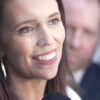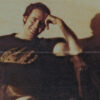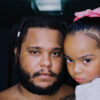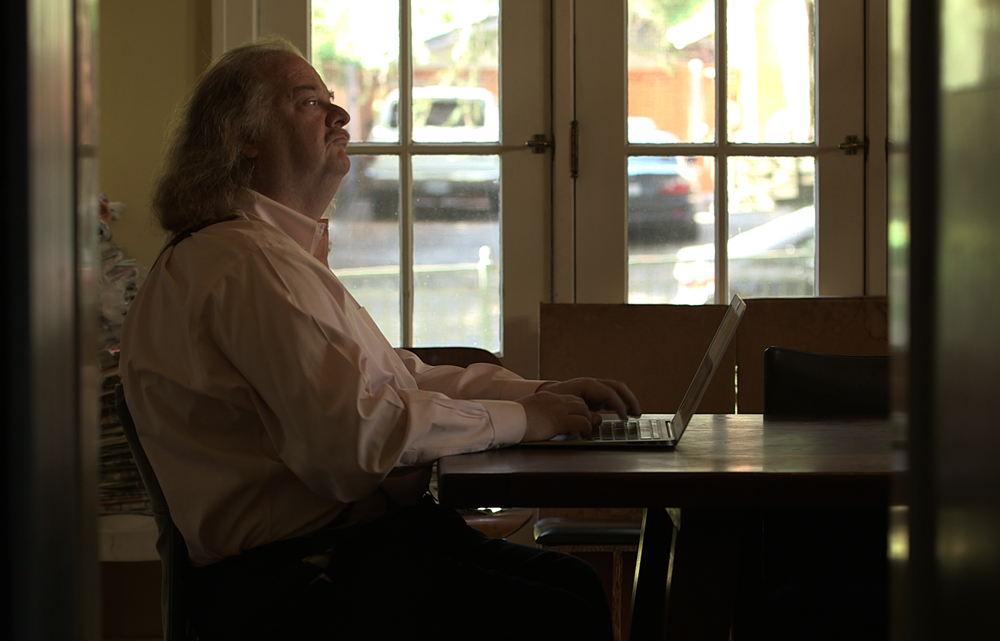Some filmmakers go on endless searches to find worthy subjects, but Laura Gabbert had to look no further than a fundraiser at her children’s school. The documentarian had just returned from finishing up her third film “No Impact Man” (with co-director Justin Schein), which followed the seemingly quixotic quest of Colin Beavan as he attempted to live a life in New York that wouldn’t leave a mark on the planet, and she wanted to work on something closer to home in Los Angeles when she noticed that a dinner with Pulitzer Prize-winning food critic Jonathan Gold, then of the LA Weekly (now the LA Times) was being auctioned off. A longtime fan of the writer whose prose is usually as sumptuous as the entrees he writes about, Gabbert couldn’t pass up on such a unique dining opportunity, but eventually, an ulterior motive crept in.
“I had dinner with him, and started a conversation there,” Gabbert recalls. “Then we had maybe three or four long coffee dates. Over time, I convinced him to spend some time with me and my camera person. We started slowly and I always said to him, ‘Let’s see how it feels for both of us and you can always back out if you need to.’ After a bunch of time together, we found our rhythm.”
In placing the successful bid, Gabbert has made winners of us all with “City of Gold,” an exuberant portrait of Gold that allows everyone to share the same experience she had sitting across from him over dinner, albeit without whatever delectable menu they had in front of them. With omnivorous taste that leads him into every neighborhood in the city, Gold is in fact a perfect subject for Gabbert, who often creates trojan horses of character studies – at once, fully realizing the subject in front of her while speaking to something larger, whether it was “Sunset Story” which tackled misconceptions about the elderly through a profile of a politically progressive retirement community in Hollywood or “No Impact Man” that may have had an environmentalist hook, but dealt with a family finding grace under extreme circumstances.
In “City of Gold,” she is able to humanize the lofty concept of urban sprawl through the eyes of one of Los Angeles’ most keen observers, using Gold’s visits to Monterey Park for Chinese or cruising down Fairfax for Ethiopian food to tell of the cultural evolution of the city. Filmed with a a sense of discovery and a great feel for all the sensations that one can experience just from walking down the street in a place this diverse, “City of Gold” becomes far more than a travelogue of the city’s best restaurants or a profile of one of its finest writers, capturing the elusive soul of a metropolis. Shortly before the film hits theaters, Gabbert spoke about the many years that went into creating such a rich stew, earning the trust of its subject and her own epiphanies along the way.

Yeah, because he was still trying to be anonymous and I think this was finally lifting the veil completely. The LA Times ran a big piece right before [“City of Gold”] premiered at Sundance where his photograph was in the paper, but he still is very careful about not letting restaurants know when he’s coming. He knows that everyone knows what he looks like, or most people do, but he’s still anonymous in that way. It was one of the ground rules in making the film that I couldn’t film him while he was actually reviewing a restaurant, and I never really wanted to make that type of film where you’re just waiting to find out if it’s a good review or not. I was much more interested in his process and the way he sees Los Angeles, and the writing itself, not whether it was a thumbs up or thumbs down review, so it worked with the approach that I wanted to take anyway.
How did the structure of the film come about – specifically, the articles you chose to build the film around?
As far as the reviews, I just tried to pick out some of my favorites or ones that related to some things we were exploring. There were obviously so many that I wanted to include but they just didn’t make it in and I was hoping to include some more music reviews too. There was supposed to be an essay on the Grand Central Market that never actually came to be, but one of the reasons we shot there is because he was working on an essay about how the market itself was changing and being gentrified. It was really just trial and error.
It took us a year to edit the film because the structure was really hard to find. It is somewhat episodic — it doesn’t have a classic first, second or third act and there’s not a lot of conflict or a real narrative arc, so it was a subtle structure where you had to find these emotional arcs and the idea of putting all the personal stuff about his family towards the end helped us find it because it felt like you earn knowing that stuff about him, his background and his dad and his brother and all of that.
During filming, I know you’ve said it took about three years just for you and him to get comfortable with each other. Was there a breakthrough moment?
First of all, part of the reason it took us so long is that the shooting was intermittent. He’s so busy and he said “yes” to the documentary, but he was still reluctant. He’s used to being a journalist, and not used to having the focus on him, so I think that made him uncomfortable, and it took a while for him to just relax with the camera and with us. Then it took me a while to figure out how to film him, [which turned out to be] just driving around the truck and talking.
One of the things he said from the very beginning was, “I don’t want my family in the film. I don’t want my children in the film,” and I said, “That’s fine.” Then after a couple of years, his wife [Laurie Ochoa, the Arts & Entertainment editor of the LA Times] actually said to me, “I actually think you should push a little bit and see if he’ll let the kids be in the film because they have a really great relationship and they talk about interesting things.” At that point, I think he trusted me more and he said, “Yes,” so I just remember feeling like that was a breakthrough in terms of the level of trust. That just gave me such a different window into Jonathan. There wasn’t one major breakthrough, but I do feel like things shifted at that point a little bit.
There’s a point at which a documentary, if it’s really going to work, becomes a real collaboration between the subject and the filmmaker, and it started to become a collaboration then. And with his wife Laurie, they’re both journalists, so they have a great sense of what will help you with this story. Laurie would say, “I think you need to interview Sue Horton, his former editor at LA Weekly.” I didn’t know who this person was, but she was a great interview and that’s when it becomes really fun because they’re throwing in great ideas that I would never have on my own.
When you did jump in his truck, would you just let him lead you geographically or were there certain areas you wanted to hit?
It was a combination of him wanting to go somewhere or already having plans with someone and then also me pushing him a little bit. For example, Trois Mec was a place I knew we wanted to shoot and of course, it was harder to shoot at the higher end restaurants But they let us come in and shoot one afternoon when it wasn’t open. That was something I’d ask Jonathan for. I was like, “I need something that’s Jonathan Gold-approved that isn’t a mom and pop place.” We talked about a few different ideas and we decided on Trois Mec, and then had to ask Ludo [Lefebvre]. The other restaurants, sometimes he’d just be meeting friends for lunch. We just happened to be filming the day he went to Jitlada and we would just go with him. Sometimes I would be like, “We really need to film at this type of restaurant. Could we do this today or next week?” And we would try to arrange that and he would invite a friend along.
I was always taking time out of his working time because we couldn’t go to any restaurants he was reviewing, except for Chengdu Taste actually, but for the most part we really didn’t do that. There are [plenty of] places that just didn’t make it into the film. It’s funny, in all these screenings [around Los Angeles], some guy is like, “Why aren’t there any restaurants in Long Beach in the movie? Why aren’t there any restaurants in the San Fernando Valley?” And I always have to explain that we shot at a lot of different restaurants, but in the end you just pull the best scenes, so it doesn’t represent as many of the restaurants or communities as you want it to. But you have to go with what works.

It was something we definitely discovered as we were shooting. What happened is we would go into these restaurants with Jonathan and a pal and we would film them eating. Usually, it was me, a camera person, and sound and we’d only really have time to sit there with Jonathan and talk to him, so we’d go back another day and shoot B-roll in the kitchen because there wasn’t time to grab that and film Jonathan eating [at the same time]. When we’d do the B-roll, I just started talking to the chefs and the owners, and I started hearing their incredible immigration stories — stories of people moving here to provide their kids with education and working hard — and it’s like what Jonathan says, “the beauty of entry-level capitalism” [with] all these little restaurants in these mini malls, so it just felt like a natural extension of the movie. I didn’t know that we were going to do that, but there were so many incredible stories and I think it was fun for Jonathan too because in seeing the film he didn’t know a lot of these stories and it was gratifying for him to hear how much he’s impacted these people.
In general, the B-roll seems extremely important to the film since it conveys a real sensuality about Los Angeles – not just in the kitchens, but getting out into the streets of all these communities where you can see the cultural imprint of those living in the different neighborhoods. How did you go about collecting that?
That was another thing we worked really hard on. To me, Los Angeles is so hard to capture because of the obvious — it’s so large and horizontal, and it’s not like filming San Francisco or New York City where you get it in one or two hits. So a lot of it was shooting a lot of different neighborhoods and then figuring out how to juxtapose those shots. Jerry Henry and Goro [Toshima], my two [cinematographers], were pushing [for B-roll], but Jerry, in particular, shot a lot of the b-roll and we shot so much to find the shots we wanted. Even while we were editing, he would go out and shoot and then we’d sit down and I’d show him what worked and what didn’t work and why. I’d be like, “Okay, I need pedestrians in Koreatown from this distance away” or “I want an egret in the LA River” [laughs] So Jerry spent a lot of time just waiting, standing on a corner, just waiting for things to happen around him. He also shot with a Ronin, which is almost like a pared down steadicam, but it’s attached to his body, so it gives a dreamlike floating feel in the movie where he could follow people walking down the sidewalk that really worked well for what we were going for, especially in that last essay in the film. It was a lot of trial and error and a real collaboration between the DPs, Jerry and Goro, and my editors, Greg [King] and Bill [Haugse], to find the right shots.
Did you learn something about Los Angeles in making the film?
I moved to Los Angeles to go to graduate school at UCLA, and Jonathan’s writing is one of the things that really made me start to fall in love with the city and want to call it home. I had a lot of reservations about moving to LA, even though I’d never lived here and while I love food, his writing for me was really about learning about Los Angeles, learning to see it the way he sees it and explore it the way he explores it, so I feel so lucky that I was able to spend so much time with Jonathan. Just driving around Los Angeles with him in his truck was incredible. He had so many interesting things to say about the city and knows it so intimately. I learned a ton about Los Angeles just by spending time with him.
One of the things I also really gained appreciation for is what it really means to be a critic and the rigor and the seriousness that’s involved. I didn’t know the film was going to be about that until we started filming, then it really became interesting to me. What does a critic do? Do people know what a critic does? It’s not just an opinion that’s thrown out there. There’s a ton of research and time and care and consideration go into writing a review. I was fascinated by that.

It’s a good question. I don’t know. There’s a real trend in documentaries now to make social issue documentaries where there’s a call for action and I think a lot of those are really great, but I’m always just much more interested in character. I feel like [with “City of Gold,”] people are going to go see it it because it’s about Jonathan and food and Los Angeles, but then incidentally, they’re going to hear these immigration stories and with any major cultural figure, there’s going to be sociopolitical issues that emerge in telling that story. I’m interested in finding those in a more organic way. But I really do think Los Angeles is endlessly fascinating and I’m interested in doing another film about an LA-based cultural figure, so we’ll see.
“City of Gold” opens on March 6th in Los Angeles at the Landmark and in New York at the IFC Center.




